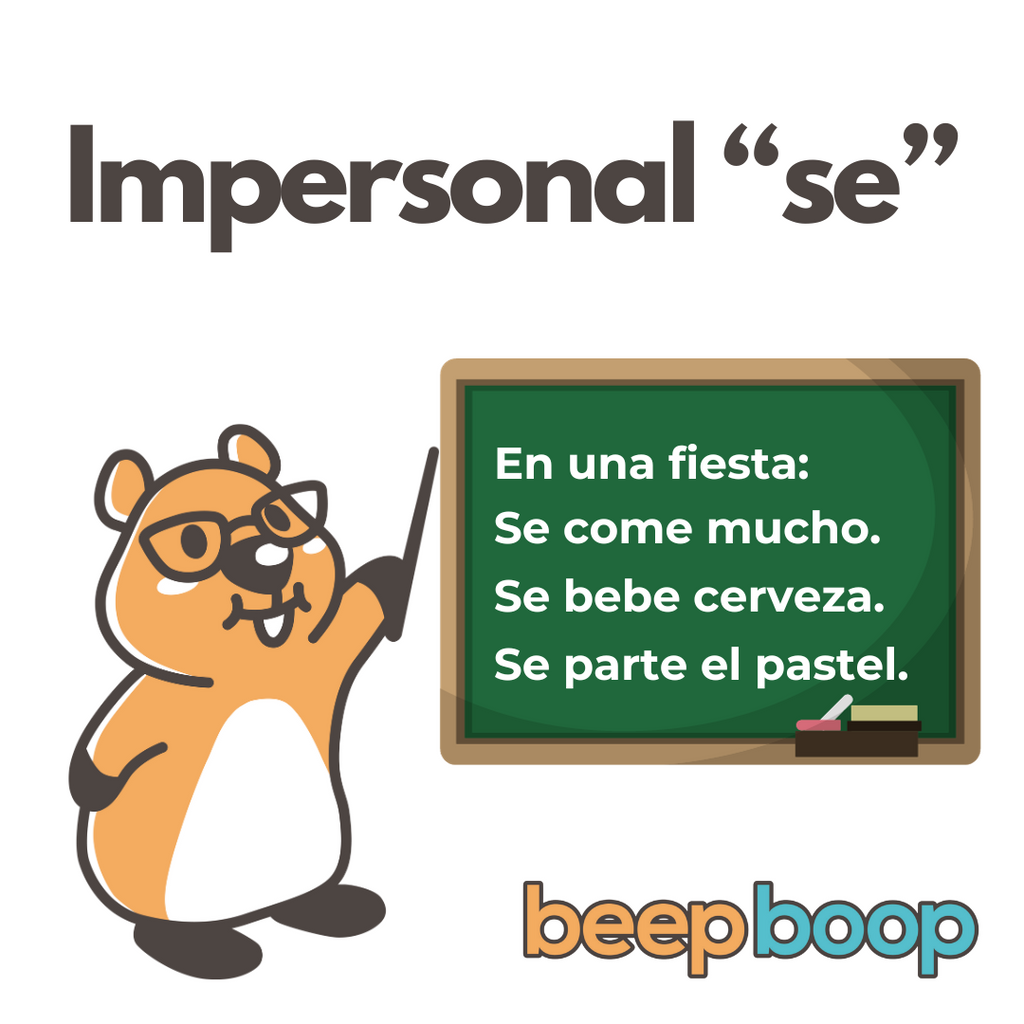Welcome to the world of Spanish grammar! Today, we're tackling a concept that often puzzles learners but is essential for sounding like a native speaker: the impersonal "se." This versatile little word is your key to unlocking a more natural way of expressing general actions or statements in Spanish. Read the below and then book a free Drill to practice live with our native Spanish instructors. Also, check out Mexican culture - Fiesta where Impersonal "se" is covered in depth. Let’s break it down.
Understanding the Impersonal "Se"
In English, we use the pronoun "one" or the passive voice to express general actions. Spanish, however, uses the impersonal "se" to convey similar meanings. It's a way to say "one does" something or "something is done" without specifying who is doing it.
How It Works
The impersonal "se" is used with third person singular verbs for most actions. If the action involves a plural noun, then the verb is also plural. Here's the formula:
Impersonal "se" + third person singular/plural verb + [optional] noun
Examples:
- "Se habla español." (Spanish is spoken.)
- "Se venden flores." (Flowers are sold.)
Using the Impersonal "Se"
Now that you understand the basics, let’s put this into practice.
- Identify the action. What is the general activity you want to talk about?
- Choose the correct verb form. Is the noun involved singular or plural?
- Apply the impersonal "se." Place it before the verb.
Why It's Important
Mastering the impersonal "se" is not just about following grammar rules; it's about embracing a critical part of daily communication in Spanish. It allows you to make observations, give instructions, or describe what people do in a broad sense.
Tips for Practice
- Read and Listen: Pay attention to signs, announcements, and instructions in Spanish. They often use the impersonal "se."
- Practice with Everyday Activities: Think about general actions done every day and try to describe them using the impersonal "se."
- Speak and Write: Incorporate this structure into your spoken or written Spanish. Practice with sentences like "Se dice que..." (It is said that...) or "Aquí se come bien." (One eats well here.)
The impersonal "se" might seem like a small part of Spanish grammar, but it has a significant impact on your fluency and the naturalness of your speech. With consistent practice and attention to the context in which it's used, you'll find that this little word seamlessly integrates into your Spanish conversations. Start paying attention to the impersonal "se" in the world around you and, before you know it, you'll be using it like a pro!
Practice what you've just learned in a free Drill

Beepboop offers live Drills taught by native Spanish speakers that you can observe for free. Observing is a great way to train your ear while expanding your Spanish vocab and knowledge of Latin American and Spanish culture.
Observing is great, but if you really want to speak Spanish fluently, you'll need to practice with native Spanish speakers as much as possible... Like every day! Thankfully, Beepboop Pro exists.
How Beepboop Pro Works
- Improve your spoken Spanish rapidly by joining one 25-minute Pro Drill every day
- During a Pro Drill, a native Spanish-speaking instructor guides you and up to 3 students through rapid (yet low-stress) role-plays simulating real-life scenarios
- Pro Drills run morning till late at night. Hop into an ongoing one or book ahead
- Prepare for hours before each Pro Drill or just show up and wing it! Our instructors will meet you where you are

